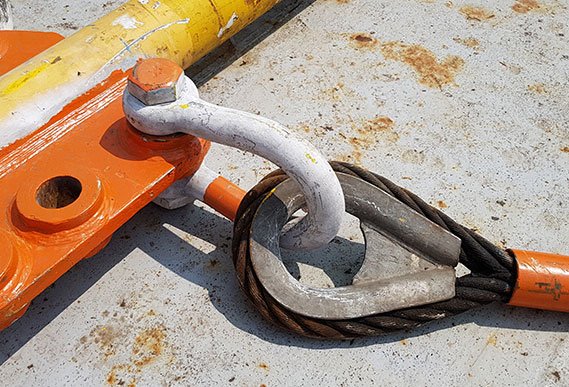Rigging Components
Spreader Bars, Pipe Ends, Man/Material Baskets, Below the Hook Lift Devices
Rigging Components are generally regulated by the OH&S Act, Regulation and Code. Nortech supports our customer base with providing an in-depth annual inspection that is completed and confirmed by documented inspection records. These annual inspections don’t replace pre-use inspections but lend aid with additional inspection methods such as Magnetic Particle inspection that help identify defects that may be subsurface and not visible during a standard pre-use inspection.
OH&S Acts, Regulations and Codes- Part 21 (Rigging) Inspection 294 define that an employer must ensure that rigging to be used during a work shift is inspected thoroughly prior to each period of continuous use during the shift to establish that the rigging is functional and safe. In Section 297(2) An employer must make certain that below-the hook lifting devices, other than slings, meet the requirements of ASME Standard B30.20-2006, Below-the-Hook Lifting Devices. Nortech supports in this process by inspecting items that may have been out of service for periods of time, or that a customer has recently completed a repair.
OH&S Acts, Regulations and Codes - Part 6 (Cranes, Hoists and Lift Devices) provides guidelines for what is required regarding lift devices. Some of these examples are described below.
Section 59(1) applies to lift devices, including cranes and hoists, with a rated load capacity of 2000 kilograms or more.
Section 60 provides guidance that if a lift device is not commercially manufactured, an employer must ensure that it is fit and safe for use as a lifting device and that it is certified by a professional engineer.
Section 62 defines that an employer must ensure that a lifting device has a plate or weatherproof label permanently secured to it that legibly shows (a) the manufacture’s rated load capacity (b) the manufacture’s name (c) The model, serial number and year of manufacture or shipment date.
Section 75.1(1) describes that an employer must ensure that (a) a commercially manufactured suspended personnel basket is erected, used, operated and maintained in accordance with the manufacturer’s specifications or specifications certified by a professional or (b) a suspended personnel basket that is not commercially manufactured is designed and certified by a professional engineer.
We have provided just a few examples from the OH&S Alberta Act, Regulations and Codes, please be aware there are numerous other guidelines plus other Provincial jurisdictions could or may have different requirements. These provisions are the minimum specifications necessary, and individual companies could have a higher standard/ protocol that they follow and enforce.
Units we Inspect Include:
Spreader Bars
Pipe Ends
Man/Material Baskets
Shackles,
Turn-buckles
Hooks
Load blocks
Headache Balls
Wedge Sockets
Below the Hook Lift Devices

